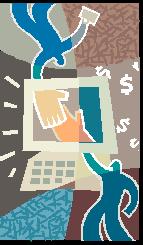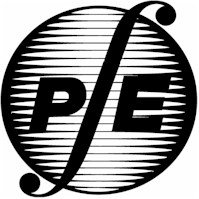Idaho Society of Professional Engineers
Friday Update – 07/27/07
UPCOMING EVENTS:
• October 26, 2007 -
PE and PS Examinations Boise, Idaho
• October 27, 2007 -
FS (aka LSIT) Examination Boise,
Idaho, Pocatello, Idaho, Moscow, Idaho
• October 27, 2007 -
FE (aka EIT) Examinations Boise,
Idaho, Pocatello, Idaho, Moscow, Idaho

SOMETHING NEW IS COMING TO THE ISPE WEBSITE….
In order to further serve our members, ISPE is adding a
Career Center to our website!
Job Seekers will be able to set up a personal job
seeker account that will allow you to find jobs, manage your resumes, and set up
job alerts. Employers/Recruiters will be able to
post job openings and view resumes. This new feature will be available on the
ISPE website soon, so keep watching for more information!

COMPUTER AIDED ENGINEERING
One of the newest additions to the NSPE Product Catalog,
Fundamentals of Computer Aided Engineering
proposes a novel, practical approach that encompasses knowledge assimilation,
decision-making capabilities and technical agility, together with concepts in
computer-aided engineering that are independent of hardware and software
technologies.

July Issue

MATHCOUNTS PROBLEM OF THE WEEK
Can you solve this MATHCOUNTS problem? The answer will appear in next week's
edition of the Friday Update!
Hot Air Ballooning
If you have to travel somewhere in particular, a hot air balloon is not the
vehicle to choose to get you there. You can’t control its direction of travel
and it only moves as fast as the wind is blowing. However, if you don’t care
where you go and want to enjoy the experience of flying, taking off and going
where the wind blows you in a hot air balloon is a fantastic experience. There
is nothing else like floating over the countryside on a cool morning and
watching the world come alive. There are three essential parts to a hot air
balloon: the basket carries the passengers, the burner heats the air, and the
envelope holds the heated air.
Hot air balloons are able to rise because warmer air rises in cooler air. This
is because a cubic foot of hot air is lighter than a cubic foot of cold air. A
cubic foot of air weighs about 28 grams. If that same cubic foot of air is
heated by 100 degrees Fahrenheit, it weighs about 7 grams less. This means that
for each cubic foot of air that has been heated by 100 degrees Fahrenheit
contained within the envelope of a hot air balloon, 7 grams can be raised.
Assume 454 grams is equivalent to 1 pound. How many cubic feet of air, heated by
100 degrees Fahrenheit, are needed in the envelope of a hot air balloon to lift
1000 pounds? Round your answer to the nearest whole number
--------------------------------------------------------------------------------
The envelopes of hot air balloons come in many shapes and sizes. If the shape of
the envelope is a sphere, what is the diameter, in feet, of a sphere that will
hold enough hot air whose temperature has been raised 100 degrees Fahrenheit to
lift 1000 pounds? Round your answer to the nearest whole number.
--------------------------------------------------------------------------------
The flight of a balloon requires a pilot and a ground crew that chases the
balloon to retrieve the balloon and its passengers when the balloon lands. The
chase crew and the pilot communicate with a 2-way radio. At 9:05 a.m. the pilot
radios the chase crew that they are descending at a constant rate of 20 feet per
minute from an altitude of 1200 feet. Write an equation in slope intercept form
that models the altitude of the balloon as a function of time. At what time does
the pilot expect his altitude to be 0 feet?
Answer to last week’s MATHCOUNTS problem:
Make a list of abundant numbers and check to see if the sum of two abundant
numbers is abundant. The first few abundant numbers are: 12, 18, 20, 24, 30, 36,
40,...
Sums: The least sum of two distinct abundant numbers is 12 + 18 = 30. 30 is an
abundant number. The next possible sum is 12 + 20 = 32. 32 is not an abundant
number. Its proper factors are 1, 2, 4, 8, and 16 and their sum is 31. 32 is the
least sum of two distinct abundant numbers that is not an abundant number.
--------------------------------------------------------------------------------
Make a list of deficient numbers and check to see if the two-digit sum of two
deficient numbers is deficient. The first few deficient numbers are: 2, 3, 4, 5,
7, 8, 9, 10, 11, 13,... The least two-digit sum of two deficient numbers is 2 +
8 = 10 or 3 + 7 = 10. 10 is a deficient number. The next possible two-digit sum
is 2 + 9 = 11 or 3 + 8 = 11 or 4 + 7 = 11. 11 is a deficient number. The next
possible two-digit sum is 2 + 10 = 12 or 3 + 9 = 12 or 4 + 8 = 12 or 5 + 7 = 12.
12 is not a deficient number. The least two-digit sum of two distinct deficient
numbers that is not deficient is 12.
--------------------------------------------------------------------------------
From our lists of abundant and deficient numbers, the least abundant number is
12 and the least deficient number is 2. Their sum is 12 + 2 = 14. 14 is not an
abundant number so 14 is the least sum of an abundant number and a deficient
number that is not abundant.
--------------------------------------------------------------------------------
Use your list of abundant numbers and make a systematic list of the sums of two
abundant numbers. 66 is the least abundant number that can be expressed as the
sum of two distinct abundant numbers in exactly four ways: 12 + 54, 18 + 48, 24
+ 42, 30 + 36.
If you want to see last week's problem again, click
http://www.mathcounts.org/webarticles/anmviewer.asp?a=1054&z=110
Idaho Society of Professional Engineers
PO Box 170239
Boise, ID 83717-0239
208-426-0636
Fax: 208-426-0639
E-Mail: ispe@idahospe.org
Web Site: www.Idahospe.org
 Idaho
Society of Professional Engineers
Idaho
Society of Professional Engineers